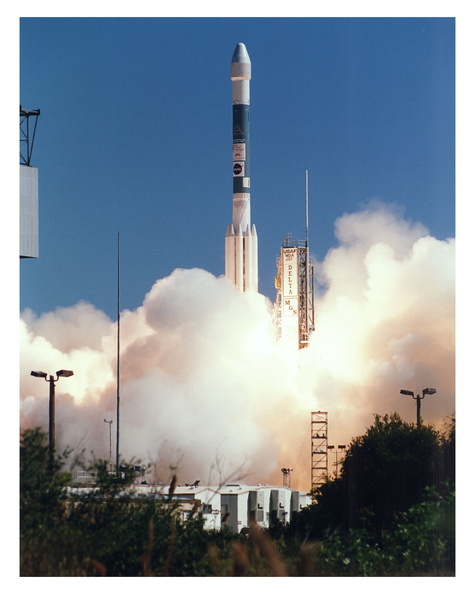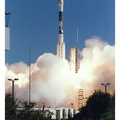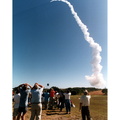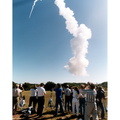
WIKIARCHIVES.SPACE
The Human Spaceflight Archive

Information
- Taken in
- Kennedy Space Center
- Author
- NASA
- Description
- The journey back to Mars begins with liftoff of the Mars Global Surveyor atop a Delta II 7925A expendable launch vehicle from Launch Complex 17A, Cape Canaveral Air Station, at 12:00:49.99 p.m. EST, Nov. 7, 1996. After an approximately 10-month interplanetary odyssey, the spacecraft will arrive at the Red Planet and begin a four- month aerobraking phase -- an innovative technique first demonstrated during the Magellan mission to Venus -- to achieve a mapping orbit. For a period of one Martian year or about two Earth years, the compact, 2,337-pound (1,060- kilogram) spacecraft will circle above most of the planet, its suite of sophisticated remote-sensing instruments building a comprehensive global portrait of Mars by mapping its topography, magnetism, mineral composition and atmosphere. Among the locations the Surveyor will pass over are the landing sites where the two U.S. Viking landers have stood since 1975 as silent monuments of the most recent successful U.S. mission to Mars. The Global Surveyor is the first of a trio of spacecraft being launched to the Red Planet this fall; up next is Russia's Mars '96 spacecraft followed by the United States' Mars Pathfinder. The Mars Global Surveyor and Mars Pathfinder missions are managed by the Jet Propulsion Laboratory for NASA; McDonnell Douglas Aerospace Corp. provides the Delta II launch vehicle.
- Created on
- Thursday 7 November 1996
- Source link
- https://science.ksc.nasa.gov/gallery/photos/1996/captions/KSC-96PC-1244.html
- Visits
- 46
- Rating score
- no rate
- Rate this photo
- License
- CC BY-NC
- Modified by WikiArchives
- No (original)
- Downloads
- 0
Powered by Piwigo







